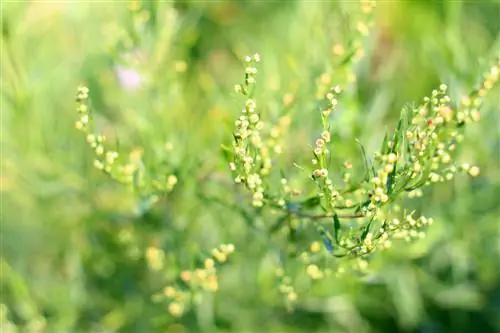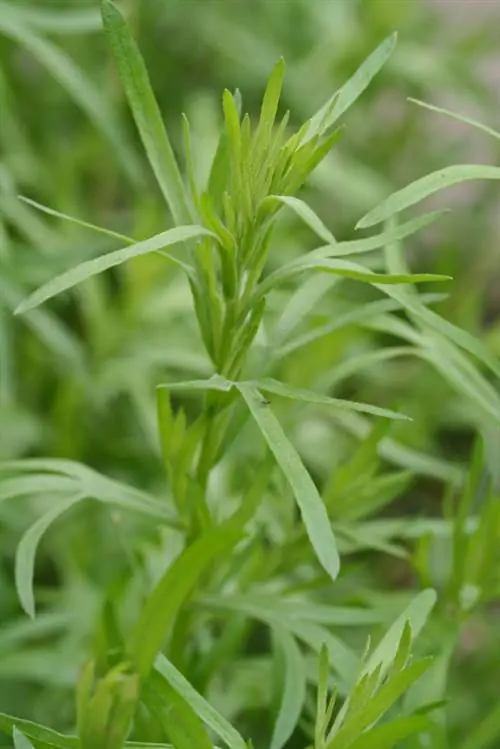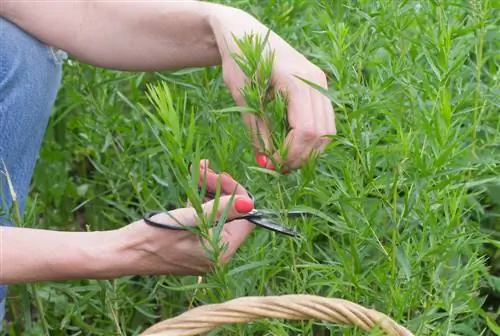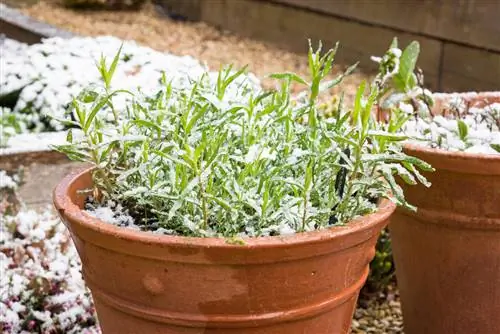- Author admin [email protected].
- Public 2023-12-16 16:46.
- Last modified 2025-01-23 11:22.
The small, elongated leaves are the kitchen treasure that we like to receive from this herb. The flowers don't really play a role in its cultivation; they can hardly be seen in this country anyway. But they potentially exist, and not in short supply.

How does tarragon bloom?
The culinary herb tarragon belongs to the daisy family (Asteraceae). In the upper part of its shoots, many branched panicles with countless flower buds grow in summer. The opened flowers are spherical, coloredwhite-yellow-greenish, with a diameter of 2-3 mm, verysmalland alsoinconspicuous
When does tarragon bloom?
Tarragon (Artemisia dracunculus) blooms in the monthsJuly to Septemberin this country. However, tarragon blooms hereonly rarely The French tarragon, which is considered a very aromatic culinary herb, simply needs much more sun than it can get for its flower heads. The tart Russian tarragon tolerates cooler temperatures and can survive -10 °C in winter. It can also bloom in our latitudes, but has far less aroma to offer. In Eastern Europe, where tarragon grows wild, the flowering period can begin as early as May or June.
Can I harvest leaves from flowering tarragon?
Russian tarragon is shortmost aromatic before flowering If you want to use it as a culinary herb, you should harvest all of its shoots shortly before flowering. The best time to harvest is a warm, sunny morning. If you don't use it fresh in a timely manner, you can dry or freeze it. French tarragon is consistently aromatic.
Are tarragon flowers also edible?
The flowers are edible However, they are not used in the kitchen. Because the garden has far more delicious and decorative flowers to offer. However, you can dry tarragon flowers and prepare them as tea. It has an appetite-stimulating, digestive effect.
How can I propagate tarragon if it doesn't bloom at all?
French tarragon that does not flower cannot offer seeds for propagation. However, you can also propagate several specimens from it:
- propagate vegetatively
- byRoot division
- or withleaf cuttings
The Russian tarragon, also known as Siberian tarragon, which blooms in this country, can be easily propagated by sowing.
Tip
Tarragon is not poisonous
Tarragon has long been described as poisonous because it contains the toxin estragole. Scientific studies have now shown that the amount consumed is far below the alarming level. Only pregnant and breastfeeding women are advised not to consume it.






